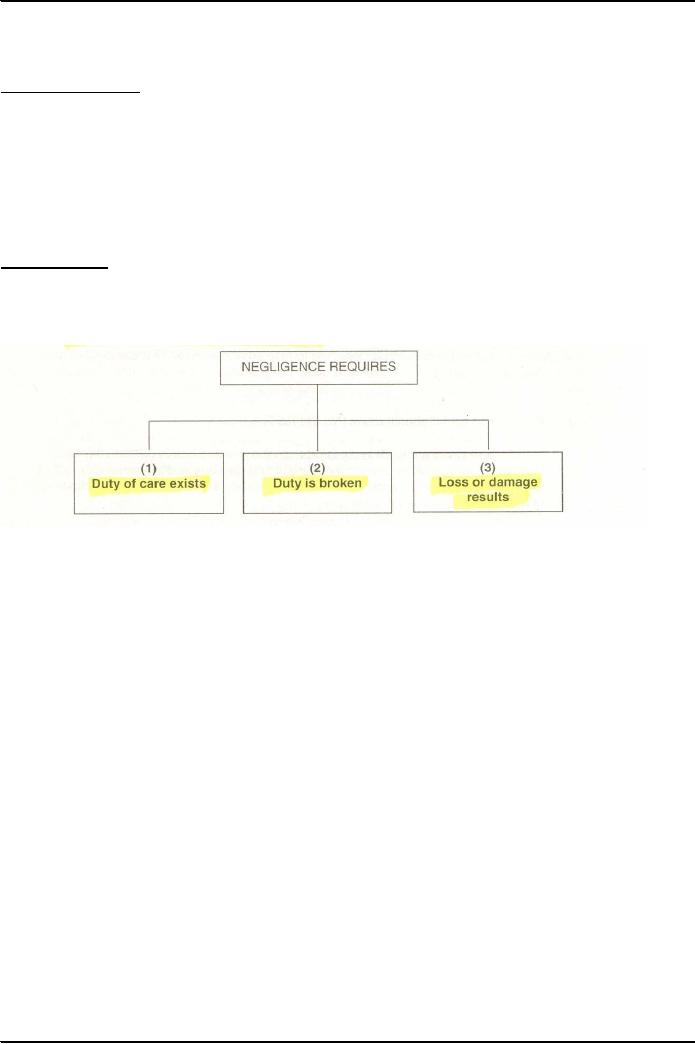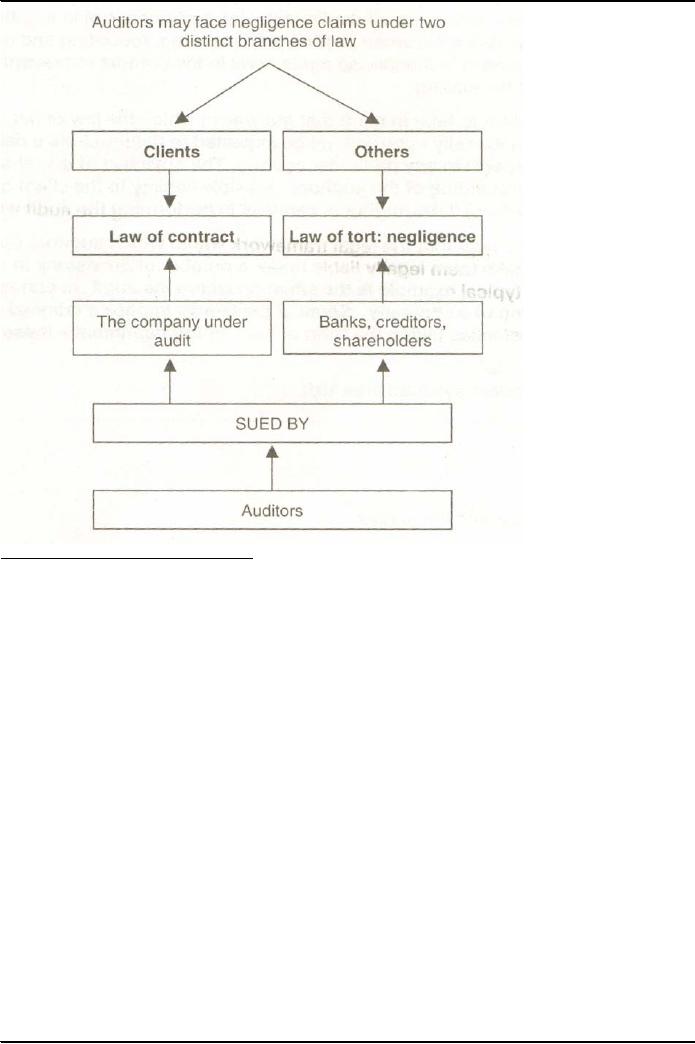 |
LIABILITIES OF AN AUDITOR |
| << Appointment, Duties, Rights and Liabilities of Auditor |
| BOOKS OF ACCOUNT & FINANCIAL STATEMENTS >> |

Fundamentals
of Auditing ACC 311
VU
Lesson
08
LIABILITIES
OF AN AUDITOR
Auditors'
Liabilities
∑ Civil
Liabilities (arising from
law suits/Liability for
negligence)
∑ Under
law of contract (initiated by the audit
client)
∑ Under
law of tort (initiated by
other users of FS)
∑ Criminal
Liabilities
Under
sections 157, 255, &
257
Against
charges of forgery (evidence
created / documents forged
etc.)
Against
false statement (regarding
opinion in report)
Civil
Liabilities
Civil
liabilities arise in the situation when
there is absence of reasonable
care and skill that
can be expected
of a
person in a set of
circumstances.
When
negligence of an auditor is being
evaluated, it is in terms of what other
competent auditors would
have
done in the same situation
21

Fundamentals
of Auditing ACC 311
VU
Jeb
Fasteners v Marks Bloom
(1980)
The
plaintiff acquired the share
capital of the company. The audited
accounts, due to the negligence of
the
auditors,
did not show a true and
fair view of the state of
affairs of the company. It was
accepted that at the
time of the
audit the defendant auditors did know of
the plaintiffs but did not
know that they were
contemplating a
take over bid.
HELD:
whilst recognizing that the auditors
owed a duty of care in this situation. It
was decided that the
auditors
were not liable because the
plaintiff had not suffered
any loss. It was proved
that the plaintiffs
would
have bought the share
capital of the company at the agreed
price whatever the accounts
had said.
Therefore, whether
or not a duty of care
existed was not directly relevant to the
decision.
How
to minimize the
liabilities
∑ Not
being negligent
∑ Following
the ISAs
∑ Agreeing the
engagement letter
∑ Defining
in report the work undertaken
∑ Defining
the purpose for the
report
∑ By
limiting liabilities to third
parties
∑ By
defining the scope of professional
competence
22
Table of Contents:
- AN INTRODUCTION
- AUDITORSí REPORT
- Advantages and Disadvantages of Auditing
- OBJECTIVE AND GENERAL PRINCIPLES GOVERNING AN AUDIT OF FINANCIAL STATEMENTS
- What is Reasonable Assurance
- LEGAL CONSIDERATION REGARDING AUDITING
- Appointment, Duties, Rights and Liabilities of Auditor
- LIABILITIES OF AN AUDITOR
- BOOKS OF ACCOUNT & FINANCIAL STATEMENTS
- Contents of Balance Sheet
- ENTITY AND ITS ENVIRONMENT AND ASSESSING THE RISKS OF MATERIAL MISSTATEMENT
- Business Operations
- Risk Assessment Procedures & Sources of Information
- Measurement and Review of the Entityís Financial Performance
- Definition & Components of Internal Control
- Auditing ASSIGNMENT
- Benefits of Internal Control to the entity
- Flow Charts and Internal Control Questionnaires
- Construction of an ICQ
- Audit evidence through Audit Procedures
- SUBSTANTIVE PROCEDURES
- Concept of Audit Evidence
- SUFFICIENT APPROPRIATE AUDIT EVIDENCE AND TESTING THE SALES SYSTEM
- Control Procedures over Sales and Debtors
- Control Procedures over Purchases and Payables
- TESTING THE PURCHASES SYSTEM
- TESTING THE PAYROLL SYSTEM
- TESTING THE CASH SYSTEM
- Controls over Banking of Receipts
- Control Procedures over Inventory
- TESTING THE NON-CURRENT ASSETS
- VERIFICATION APPROACH OF AUDIT
- VERIFICATION OF ASSETS
- LETTER OF REPRESENTATION VERIFICATION OF LIABILITIES
- VERIFICATION OF EQUITY
- VERIFICATION OF BANK BALANCES
- VERIFICATION OF STOCK-IN-TRADE AND STORE & SPARES
- AUDIT SAMPLING
- STATISTICAL SAMPLING
- CONSIDERING THE WORK OF INTERNAL AUDITING
- AUDIT PLANNING
- PLANNING AN AUDIT OF FINANCIAL STATEMENTS
- Audits of Small Entities
- AUDITORíS REPORT ON A COMPLETE SET OF GENERAL PURPOSE FINANCIALSTATEMENTS
- MODIFIED AUDITORíS REPORT